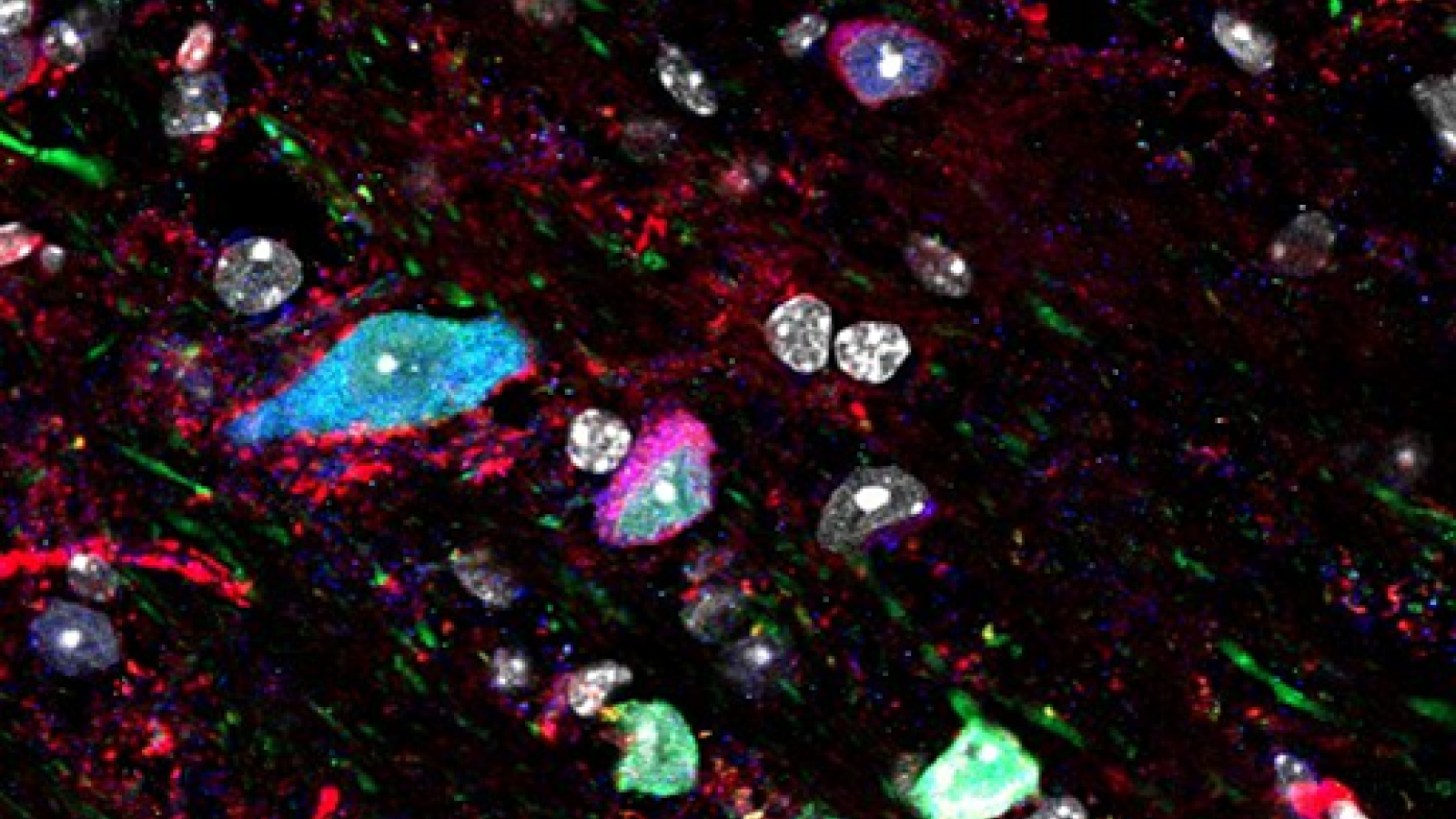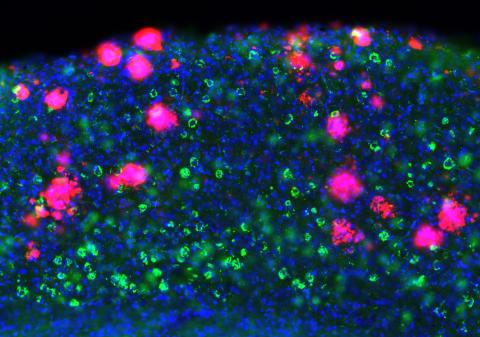A study led by Dr Marc Aurel Busche (UK DRI at UCL) sheds light on the earliest stage of Alzheimer’s, identifying which layers and cell types of the brain are first affected. The research, published in the journal Neuron, identifies a highly specific type of cell in deep brain layers as selectively vulnerable, providing potential new pathways for targeted therapies.
What was the challenge?
Alzheimer’s disease starts with the build-up of toxic amyloid-beta protein in the neocortex, an area of the brain involved in key functions such as memory formation, thinking, language and decision-making. The neocortex consists of six distinct layers, and although amyloid beta accumulation and loss of neurons occurs across all six, scientists do not yet know which layers or types of brain cells are first affected in Alzheimer’s.
In this study, the team addressed this gap using mice to examine the vulnerability of cells from different layers of the neocortex, early in the disease process.
Our study reveals previously unrecognised cell-specific vulnerabilities in deep layers of the neocortex in early Alzheimer’s. These changes are occurring before the hallmark protein amyloid beta has begun to form visible plaques.
Group Leader
What did the team do and what did they find?
Using specialised imaging and electrophysiological recordings to measure brain activity across different layers of the neocortex in the mice, the researchers found that certain neurons in deeper layers (specifically, layers 5/6) showed unusual activity. They found that this occurred before amyloid beta had formed visible plaques in the brains of the mice.
The scientists also discovered that a specific type of cell, called parvalbumin interneurons, which help control brain activity and are important for memory-based cognition, stopped working properly in these deeper layers, though similar cells in upper layers were functioning normally.
This breakdown was linked to lower levels of key proteins (NPTX2 and GluA4) that help cells in the brain communicate. When the researchers boosted one of these proteins, known as NPTX2, the affected cells started working properly again.
What is the impact?
These findings suggest that problems in deeper cortical layers represent some of the earliest changes in Alzheimer’s and that targeting specific cells in these layers could be a promising treatment approach.
Additionally, the findings may help explain why human studies have consistently observed lower levels of NPTX2 in the cerebrospinal fluid of individuals with Alzheimer’s. Lower levels of NPTX2, even among cognitively healthy adults, strongly predict progression to cognitive impairment and Alzheimer’s dementia independently of other biomarkers like amyloid beta. Thus, this discovery not only explains a critical piece of early Alzheimer’s biology but also highlights NPTX2 as a promising candidate for early diagnosis and therapeutic intervention.
Dr Marc Aurel Busche explained:
“Our study reveals previously unrecognised cell-specific vulnerabilities in deep layers of the neocortex in early Alzheimer’s. These changes are occurring before the hallmark protein amyloid beta has begun to form visible plaques. Recognising this early disruption of normal brain function is crucial for understanding how Alzheimer’s begins and may be important for early detection. By identifying and targeting these cells, we could open the door to new treatments for Alzheimer’s.”
Read more about this study on Alzforum.
Reference: Papanikolaou A, Graykowski D, Lee BI, Yang M, Ellingford R, Zünkler J, Bond SA, Rowland JM, Rajani RM, Harris SS, Sharp DJ, Busche MA. Selectively vulnerable deep cortical layer 5/6 fast-spiking interneurons in Alzheimer's disease models in vivo. Neuron. 2025 May 7:S0896-6273(25)00293-4. doi: 10.1016/j.neuron.2025.04.010.
Banner image: Interneurons expressing GluA4 in deep cortical layers of a mouse brain. Credit: David Graykowski.

